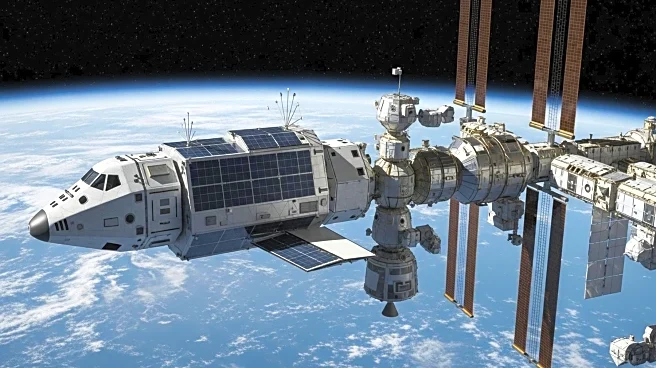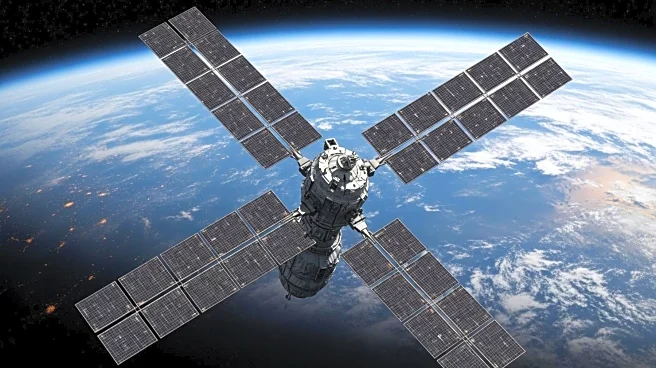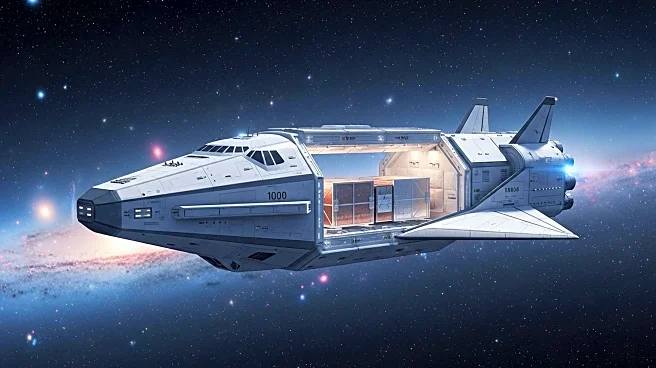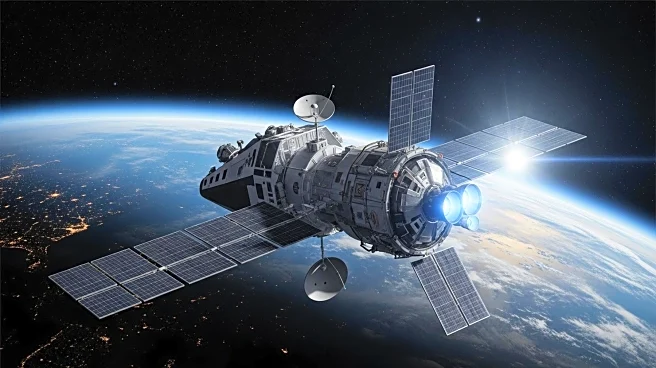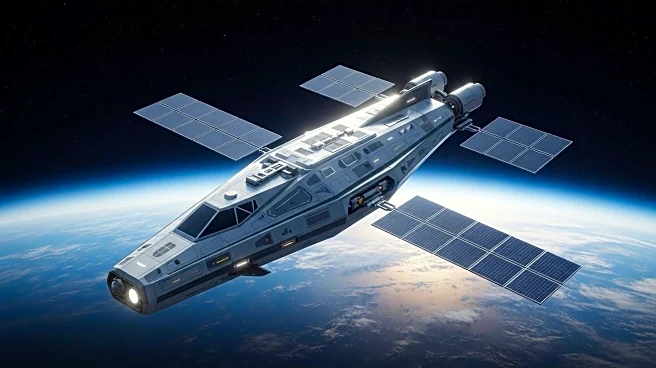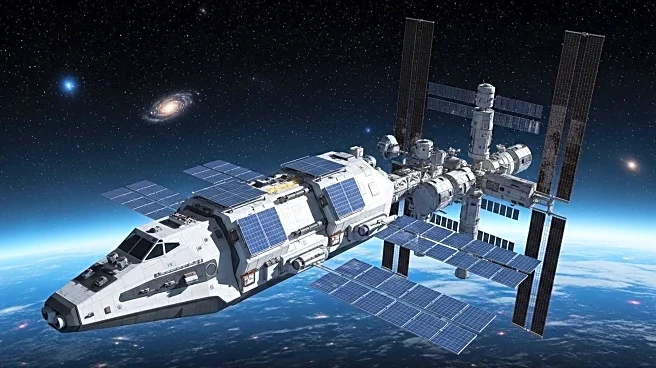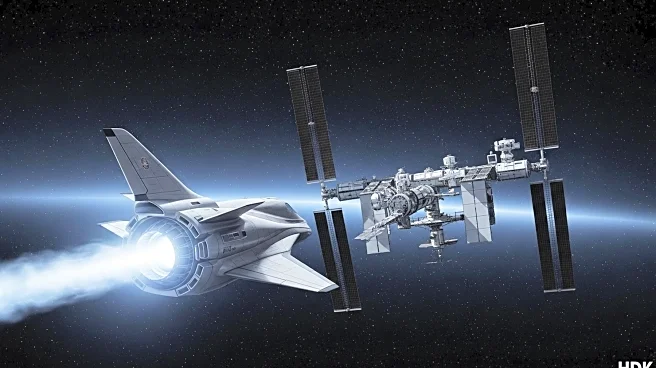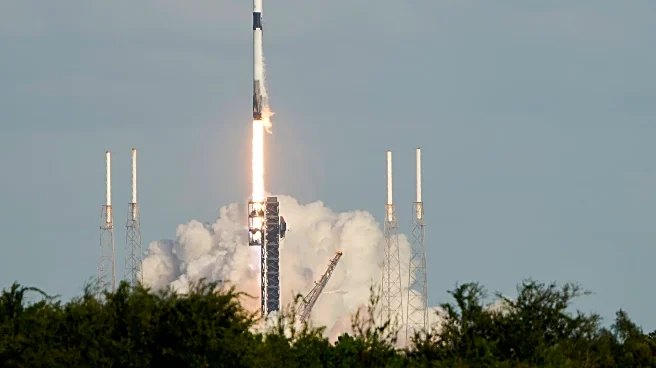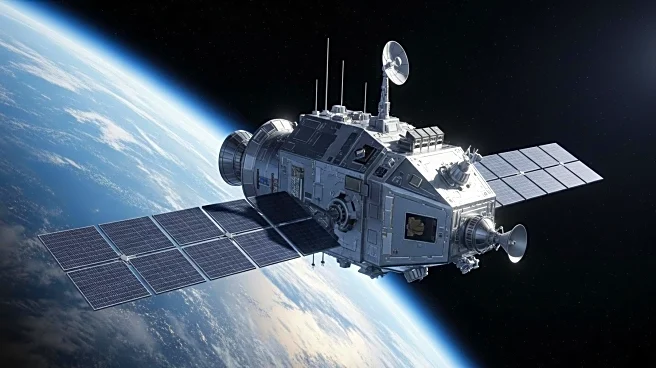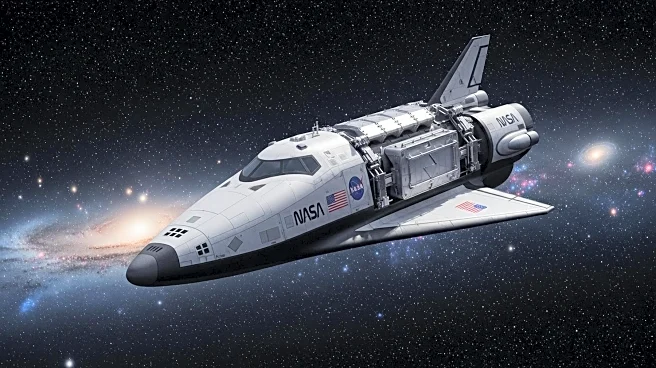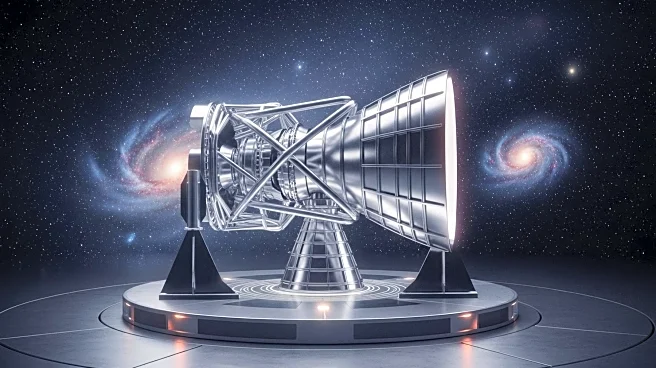What is the story about?
What's Happening?
Northrop Grumman's Cygnus XL spacecraft has been successfully installed on the International Space Station's Unity Module as part of NASA's Commercial Resupply Services mission. The Cygnus XL, launched on a SpaceX Falcon 9 rocket, carries over 11,000 pounds of research and supplies. This marks the first flight of the larger, more cargo-capable version of the Cygnus spacecraft. The mission aims to support ongoing scientific research and station operations, with the spacecraft scheduled to remain docked until spring, when it will dispose of debris through re-entry into Earth's atmosphere.
Why It's Important?
The successful installation of the Cygnus XL spacecraft enhances the ISS's capacity for scientific research and supply delivery. This mission supports the station's role as a hub for international collaboration in space exploration and research. The increased cargo capacity of the Cygnus XL allows for more extensive scientific experiments and supplies to be transported, benefiting various research initiatives. The mission also demonstrates the effectiveness of commercial partnerships in advancing space exploration and maintaining the ISS's operational capabilities.
What's Next?
The Cygnus XL will remain docked at the ISS until spring, supporting ongoing research and station activities. Upon departure, it will dispose of debris through atmospheric re-entry. Future missions may continue to utilize the Cygnus XL's enhanced cargo capacity to support scientific research and international collaboration. The success of this mission may encourage further development of commercial spacecraft to enhance space station operations and expand research opportunities.
AI Generated Content
Do you find this article useful?
